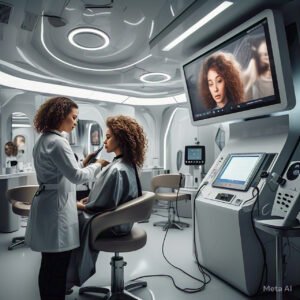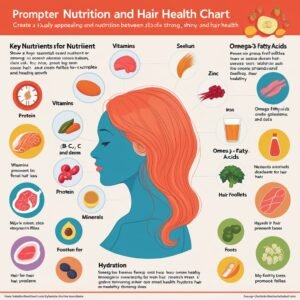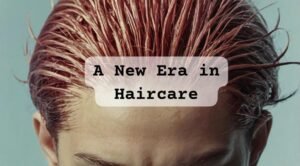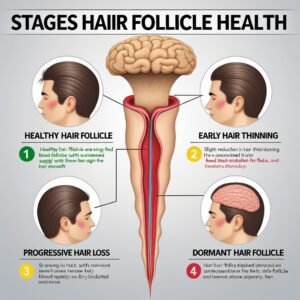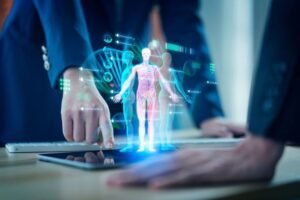Artificial Intelligence (AI) is now playing a crucial role in the diagnosis and treatment of hair damage. Hair care has always been an important part of personal grooming. To maintain one’s hair in the past, one relied on personal experience or expert advice from dermatologists and hair specialists. However, AI has revolutionized this field by providing precise and efficient methods to identify, diagnose, and recommend tailored solutions for hair health.
Understanding Hair Damage
Environmental exposure, heat styling, chemical treatments, poor nutrition, and underlying health conditions are all potential causes of hair damage. The most common types of hair damage include split ends, dryness, breakage, frizz, thinning, and hair loss. Identifying these issues early and accurately is vital for effective treatment
How AI is Transforming Hair Diagnosis
1. Analysis and Recognition of Images:
One of the primary ways AI is transforming hair diagnosis is through the use of image recognition and analysis tools. AI-powered apps and devices can capture high-resolution images of a person’s hair and analyze the condition of individual strands. By using machine learning algorithms, these systems can identify issues such as breakage, split ends, thinning, and dryness.
These systems are designed to evaluate hair health at a microscopic level, providing more detailed insights than a standard visual inspection. The AI model can assess hair density, texture, and elasticity, offering a comprehensive overview of hair health.
2. Personalized Recommendations :
AI systems not only identify hair damage but also provide personalized recommendations. Once a diagnosis is made, AI tools can suggest specific products, treatments, or lifestyle changes to help repair the hair. These solutions might include recommending shampoos, conditioners, oils, or treatments tailored to a person’s unique hair type, damage level, and even scalp condition.
Additionally, AI can recommend changes in diet, hydration, and hair care routines that could prevent further damage. The system can track progress over time by continuously analyzing hair health, ensuring that the recommendations evolve based on the individual’s needs.
3. Real-Time Monitoring:
AI can enable real-time monitoring of hair health. Users can continuously monitor their hair’s condition with sensor-equipped wearable technology like smart headbands or hairbrushes. These devices gather data such as moisture levels, hair strength, and scalp condition, which are then analyzed by AI algorithms to provide instant feedback and alerts.
This continuous monitoring allows users to be proactive in maintaining their hair health, rather than reacting only after significant damage has occurred. AI can help prevent long-term damage by suggesting immediate actions like moisturizing or avoiding excessive heat styling by tracking small changes in hair health.
4. Scalp Health Diagnosis:
The scalp plays a vital role in overall hair health. Many hair problems, such as thinning or hair loss, can be attributed to poor scalp health, including dandruff, dryness, or inflammation. AI is capable of diagnosing scalp conditions by analyzing the scalp’s appearance through images or sensors. This can help identify potential issues like seborrheic dermatitis, fungal infections, or clogged hair follicles, which may lead to hair damage or loss if left untreated.
Before more serious damage occurs, targeted treatments, such as medicated shampoos or topical treatments, can be recommended for scalp conditions that are detected early.
Images:




VIDEO:
